Q
What Segment is Mitsubishi Xpander?
The Mitsubishi Xpander belongs to the compact MPV (Multi-Purpose Vehicle) segment in the Malaysian market. It mainly targets family users and consumers who pursue practicality. Its body size falls between the B-Segment and C-Segment. Combining the ground clearance of an SUV with the flexible space layout of an MPV, it's highly suitable for the multi - road - condition family travel needs in Malaysia.
The vehicle is equipped with a 1.5L MIVEC naturally - aspirated engine, paired with either a 4 - speed automatic or a 5 - speed manual transmission to balance fuel economy and daily driving requirements. The three - row, seven - seat layout and foldable seat design further enhance the space's practicality.
In the Malaysian market, the Xpander's competitors include models like the Toyota Avanza and Honda BR - V. However, the Xpander has captured a certain market share thanks to its more stylish exterior design and high cost - performance ratio.
It's worth mentioning that compact MPVs are very popular in Malaysia. These models usually have a relatively high ground clearance to adapt to local road conditions while maintaining a flexible body size for easy city driving. When making a choice, consumers should not only consider space and price but also pay attention to details such as safety configurations like ABS, EBD, and the number of airbags, as these configurations may vary among different brands and models.
Special Disclaimer: This content is published by users and does not represent the views or position of PCauto.
Related Q&A
Q
What engine is in the Mitsubishi Xpander 2023?
The 2023 Mitsubishi Xpander is powered by a 1.5-liter MIVEC four-cylinder naturally aspirated gasoline engine, delivering a maximum output of 105 horsepower and a peak torque of 141 Nm. It comes paired with either a 5-speed manual or a 4-speed automatic transmission. This engine prioritizes fuel efficiency and smoothness, making it ideal for daily family use. As a 7-seater MPV, the Xpander's engine is tuned to emphasize low-end torque, suiting city driving and load-carrying needs. It also features Mitsubishi's MIVEC variable valve timing technology, which optimizes power response and fuel consumption. Among its peers, many competitors like the Toyota Avanza or Honda BR-V also use naturally aspirated engines of similar displacement, but their tuning and technical focuses vary. The Xpander stands out for its high reliability and relatively low maintenance costs, appealing to practicality-minded consumers. For those seeking more power, Mitsubishi offers other models with turbocharging technology, but the Xpander is positioned more towards economy and practicality, targeting family users.
Q
How much is the new Xpander 2023?
The official price of the all-new 2023 Mitsubishi Xpander ranges from RM99,980 to RM111,980, depending on the variant, including the standard Xpander, the high-spec Xpander, and the Xpander Cross. All models are powered by a 1.5L MIVEC naturally aspirated engine paired with a 4-speed automatic transmission, delivering a smooth driving experience. The Xpander is known for its spacious 7-seater cabin and flexible interior layout, making it ideal for families. The addition of the new ADAS advanced driver assistance system further enhances driving safety. This MPV stands out for its value-for-money proposition in its class, especially appealing to consumers who prioritize practicality and comfort. When purchasing, you can also check out the promotional offers from different dealers, such as free maintenance services or low-interest loans. If you're interested in the Xpander, it's advisable to visit a nearby showroom for a test drive to experience its handling and space firsthand. You might also want to compare it with other models in the same category, like the Toyota Avanza or Honda BR-V, to make a more comprehensive buying decision.
Q
What is the ground clearance of the Xpander 2020?
The 2020 Mitsubishi Xpander has a ground clearance of 205mm, a design that makes it perform exceptionally well on Malaysia's diverse road conditions, handling both city driving and occasional country roads with ease. The higher ground clearance not only improves the vehicle's off-road capability but also effectively prevents the undercarriage from scraping on rough roads, making it particularly suitable for water accumulation section that may appear during Malaysia's rainy season. Ground clearance is one of the key indicators for measuring the practicality of SUVs and MPVs; models typically ranging between 180mm and 220mm can balance comfort and off-road performance. As a 7-seater MPV, the Xpander maintains a spacious interior while also focusing on optimizing the chassis height, giving it a competitive edge among models in its class. For Malaysian consumers, choosing a model with appropriate ground clearance is especially important, as it directly relates to the convenience and safety of daily driving, especially when dealing with areas with poor road conditions.
Q
What is the fuel consumption of the Mitsubishi Xpander Cross 2020?
According to official figures, the 2020 Mitsubishi Xpander Cross has a combined fuel consumption of approximately 6.5 to 6.9 liters per 100 kilometers, though the actual numbers can vary depending on driving habits, road conditions, and vehicle load. It’s powered by a 1.5-liter MIVEC naturally aspirated engine paired with a 4-speed automatic transmission, delivering smooth power and decent fuel efficiency—perfect for Malaysian family daily use. For owners looking to cut fuel costs further, regular vehicle maintenance, keeping tire pressure at the recommended level, and avoiding aggressive driving like sudden acceleration or hard braking can all help boost fuel efficiency. Plus, as a crossover MPV, the Xpander Cross doesn’t just shine in fuel economy; it also offers generous interior space and a higher ground clearance, making it ideal for Malaysia’s varied road conditions. Whether you’re commuting in the city or heading out for a weekend getaway, it handles it all with ease.
Q
How many seats are in the Mitsubishi Xpander 2020?
The 2020 Mitsubishi Xpander is a popular 7-seater MPV in the Malaysian market, featuring a 2+3+2 seating layout that can accommodate 7 passengers. The second-row seats fold down in a 60:40 split, while the third-row seats fold 50:50, offering flexible space configurations to meet different cargo needs. Under the hood, it's powered by a 1.5-liter MIVEC naturally aspirated engine, delivering 105 horsepower and 141 Nm of peak torque, paired with a 4-speed automatic transmission. It focuses on practicality and fuel efficiency, making it a great fit for family users. The Xpander also comes with basic features like a multifunction steering wheel and a touchscreen infotainment system. Its higher ground clearance (205mm) helps tackle some of Malaysia's rougher road conditions. Notably, the Xpander positions itself between compact MPVs and mid-size SUVs in the Southeast Asian market, competing with models like the Toyota Avanza and Honda BR-V. However, its unique exterior design and Mitsubishi's reputation for durability make it a top choice for many consumers.
Q
What size engine is in the Mitsubishi Xpander 2020?
The 2020 Mitsubishi Xpander is powered by a 1.5-liter MIVEC naturally aspirated petrol engine, model 4A91. This four-cylinder unit churns out 105 horsepower (77 kilowatts) and a peak torque of 141 Nm, paired with either a 5-speed manual or 4-speed automatic transmission. Its performance is ideal for daily family use, striking a good balance between fuel efficiency and reliability. This engine is widely used across multiple Mitsubishi models, boasting mature technology and low maintenance costs, making it well-suited for Malaysia's road conditions and climate. As a 7-seater MPV, the Xpander's engine is tuned to deliver strong low-end torque, perfect for city driving and carrying loads, aligning with the Southeast Asian market's preference for durability and practicality. It's worth noting that while naturally aspirated engines aren't as powerful as turbocharged ones, their simpler structure, easier maintenance, and lower long-term running costs are part of why the Xpander remains popular in Malaysia.
Q
Is Xpander 2024 3 cylinder?
Based on the current information, the 2024 Mitsubishi Xpander available in the Malaysian market is equipped with a 1.5 - liter MIVEC four - cylinder naturally aspirated engine, not a three - cylinder configuration. This engine delivers 105 horsepower and 141 Nm of torque, paired with either a 5 - speed manual or a 4 - speed automatic transmission. It focuses on providing smoothness and fuel efficiency for the family car market.
The doubts about a three - cylinder engine might stem from the fact that some brands have adopted three - cylinder technology in recent years for emission reduction purposes. However, the Xpander maintains a four - cylinder layout to ensure power stability. It's worth noting that although three - cylinder engines are smaller in size and more fuel - efficient, they usually require more advanced technical tuning for vibration suppression and high - speed performance. In contrast, the four - cylinder structure still has advantages in terms of durability and smoothness.
Malaysian consumers can make their choices according to their own needs when purchasing. If they prioritize low fuel consumption and are open to new technologies, they can look into three - cylinder models from other brands. If they prefer a more mature powertrain, the four - cylinder configuration of the Xpander remains a reliable option. It is recommended to take test drives to experience the differences.
Q
What is the ground clearance of the Xpander 2024?
The 2024 Mitsubishi Xpander has a ground clearance of 205 millimeters. This figure is relatively high among compact MPVs and allows the vehicle to adapt well to Malaysia's diverse road conditions, including urban roads and the rough terrains in the suburbs. The high ground clearance not only improves the vehicle's passability but also reduces the risk of chassis scratches, especially on flooded roads that may occur during the rainy season in Malaysia.
In addition to the ground clearance, the 2024 Xpander is also equipped with an optimized suspension system, which further enhances driving stability and comfort. For Malaysian consumers, this type of high - chassis MPV is very practical. It can meet the needs of family outings and handle complex road conditions.
If you often need to carry passengers or cargo and also pay attention to the vehicle's passability, the 2024 Xpander would be a great choice. Its space performance and practicality are also worth noting.
Q
Is the 2024 Mitsubishi Xpander a MPV or SUV?
The 2024 Mitsubishi Xpander falls into the MPV (Multi-Purpose Vehicle) category rather than the SUV (Sport Utility Vehicle) category. Its original design aim was to meet the needs of family users for spacious interiors and comfortable riding experiences. It features a three - row seat layout and sliding side doors, which are typical characteristics of MPVs. The Xpander has a relatively high ground clearance and crossover - style exterior kits, making it look somewhat like an SUV. However, in essence, it remains an MPV focused on practicality and versatility.
For consumers in Malaysia, the Xpander is an excellent family vehicle. It offers good comfort and convenience, whether for city driving or long - distance trips. The main differences between MPVs and SUVs lie in their body structures and uses. MPVs prioritize passenger space and cargo - loading flexibility, while SUVs emphasize off - road performance and driving visibility. Consumers can choose the appropriate model based on their actual needs.
The Xpander has always been very popular in the Malaysian market because it combines practicality, economy, and reliability, making it a great fit for local road conditions and family - use scenarios.
Q
What is the fuel consumption of the 2024 Mitsubishi Xpander?
The 2024 Mitsubishi Xpander offers a moderate fuel economy. According to official data, its combined fuel consumption is approximately 6.5 to 7.2 liters per 100 kilometers. The exact figure may vary slightly depending on driving habits, road conditions, and vehicle configurations (such as the 2WD or 4WD versions). This model is equipped with a 1.5-liter MIVEC naturally aspirated engine, paired with a 4-speed automatic or 5-speed manual transmission. The power is tuned to meet the practical needs of families.
For Malaysian users, the Xpander's fuel consumption is suitable for daily city commuting and medium - to short - distance trips, especially considering the common traffic congestion in the local area. It is recommended to perform regular maintenance (such as replacing the air filter and spark plugs) to optimize fuel efficiency. In addition, if you want to further reduce fuel consumption, you can try some fuel - saving driving techniques like smooth acceleration and reducing idling time.
Similar models in the same class, such as the Toyota Avanza or Honda BR - V, have a comparable fuel economy. However, the Xpander has an edge in terms of space flexibility and cost - effectiveness, making it a great choice for family users who value practicality.
Popular Cars
Model Year
Car Compare
Car Photo
Latest Q&A
Q
Does the 2019 Golf GTI have a timing belt or chain?
The 2019 Golf GTI uses a timing chain instead of a timing belt—a design that offers better durability and lower maintenance costs. Typically, a chain lasts as long as the engine itself and rarely needs replacement, whereas a belt requires inspection or replacement every 60,000 to 100,000 km. If neglected, a worn belt can snap and cause severe engine damage.
VW’s EA888 engine family has long relied on chain-driven systems, which are relatively quiet and highly reliable. That said, it’s crucial to periodically check the tensioner’s condition. Some earlier models experienced timing issues due to tensioner design flaws, but this was addressed in the 2019 version.
For performance enthusiasts, a chain system handles high-revving stress better, making it a common choice for hot hatches like the GTI. For daily driving, just stick to VW 50400/50700-spec oil as recommended in the manual—proper lubrication keeps the chain system healthy long-term.
One heads-up: If you hear noticeable metallic rattling near the front of the engine, have the guides or tensioner inspected ASAP. Unlike the telltale belt squeal before failure, this noise is a classic sign of chain-related wear.
Q
What is the recall on the 2019 GTI?
The 2019 Volkswagen Golf GTI was subject to a safety recall addressing two potential issues. First, the fuel pump control unit software could malfunction, potentially causing engine stalling in rare cases. Second, some vehicles might have rear suspension stabilizer link bolts that weren't tightened to specification, posing a loosening risk. Owners can visit authorized dealers for free software updates or bolt retightening.
These proactive recalls demonstrate Volkswagen's commitment to safety. Dealers often handle outstanding recall items during routine maintenance.
For performance-oriented models like the GTI, it's wise to go beyond recall checks. Pay close attention to the turbo system, DSG transmission fluid, and brake wear—these components endure more stress during spirited driving. If warning lights appear or you notice unusual noises, get a professional inspection promptly. Keeping the car in top shape ensures you can fully enjoy its dynamic capabilities.
Q
Does the 2019 GTI require premium gas?
The 2019 GTI does recommend using high-octane fuel (typically RON 95 or above). Its 2.0L turbocharged engine has a relatively high compression ratio, and premium gas ensures optimal performance while reducing knock risk. It also helps maintain engine cleanliness and long-term reliability.
While the car may tolerate lower-octane fuel (like RON 92), you’d see slightly reduced power output and fuel efficiency. Over time, it could also affect engine longevity. Turbocharged engines are particularly sensitive to octane ratings since turbos generate higher heat and pressure—high-octane fuel handles these conditions better.
Mixing different fuel grades occasionally won’t hurt, but sticking to the manufacturer’s recommendation is ideal. Also, periodic fuel additive treatments can help clean carbon buildup, especially for direct-injection engines.
One more thing: even with the same octane rating, fuel additive packages vary by brand. So, picking a reputable gas station matters too.
Q
How long will a 2019 GTI last?
The lifespan of a 2019 GTI largely depends on maintenance and driving habits. With regular oil changes, transmission fluid replacements, and avoiding aggressive driving, it can easily clock over 200,000 kilometers—or even more. Its 2.0T engine and DSG gearbox are proven combos, and as long as you stick to the factory service schedule, mechanical reliability won’t be an issue.
Just keep in mind: turbocharged engines demand extra care. Always use the right spec full-synthetic oil and monitor the cooling system. Climate plays a role too—hot, humid conditions mean paying extra attention to rubber seals and electronics. Every 50,000 km, have the timing chain and high-pressure fuel pump inspected (key items for turbos).
Driving style matters. Don’t redline it constantly, and let the engine warm up properly after cold starts. Rustproofing helps long-term durability, so regular underbody washes are smart. Nail these details, and this car’s built to last.
Q
How fast is the 2019 GTI?
The 2019 GTI truly delivers when it comes to performance. Under the hood lies a punchy 2.0-liter turbocharged four-cylinder, churning out 228 horsepower and 350 Nm of torque. Whether you opt for the engaging 6-speed manual or the lightning-fast 7-speed DSG, this hot hatch rockets from 0-100 km/h in just 6.3 seconds, with an electronically limited top speed of 250 km/h.
What really sets the GTI apart is its razor-sharp handling. The sport-tuned suspension and electronic differential lock work together to deliver precise steering and rock-solid cornering stability. It’s the perfect blend of everyday practicality and proper driver’s car thrills—a well-rounded hot hatch in every sense.
For enthusiasts, the GTI’s tuning potential is massive. Many owners go for ECU remaps or intake/exhaust upgrades to squeeze out even more power. Just remember to keep things street-legal—safety and compliance should always come first. Around here, these pocket rockets have a solid following, and it’s easy to see why.
View MoreRelated News
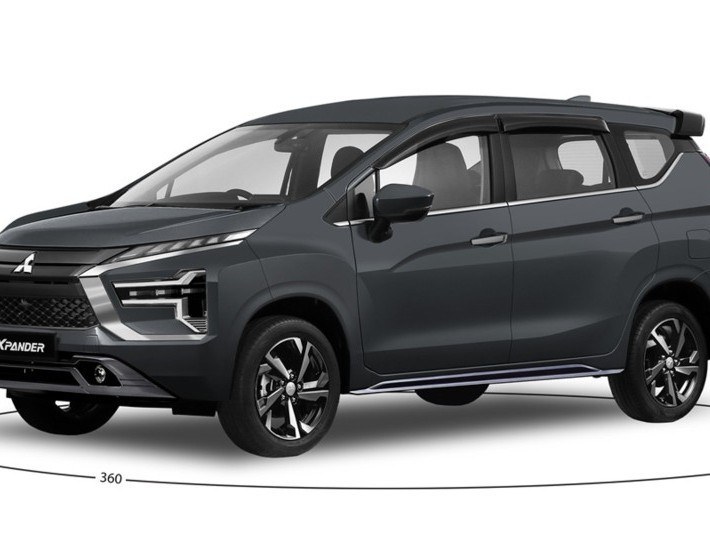
Mitsubishi Xpander On-Road Price: The Complete Pre-Purchase Guide
JamesApr 9, 2025

Mitsubishi Xpander Redesign: 4AT+1.5L Power Dated, Only 2 Safety Airbags!
JohnSep 24, 2024
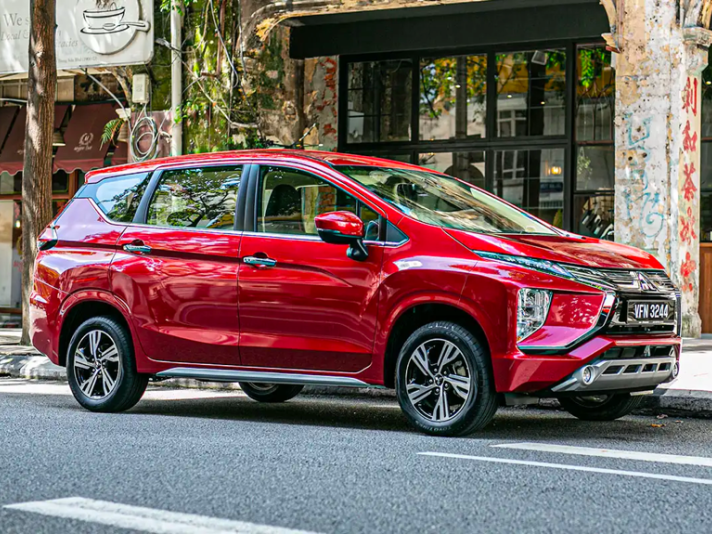
Mitsubishi Xpander: Priced at RM 100,980, a perfect combination of comfort, spaciousness and fashion
LienMay 30, 2024
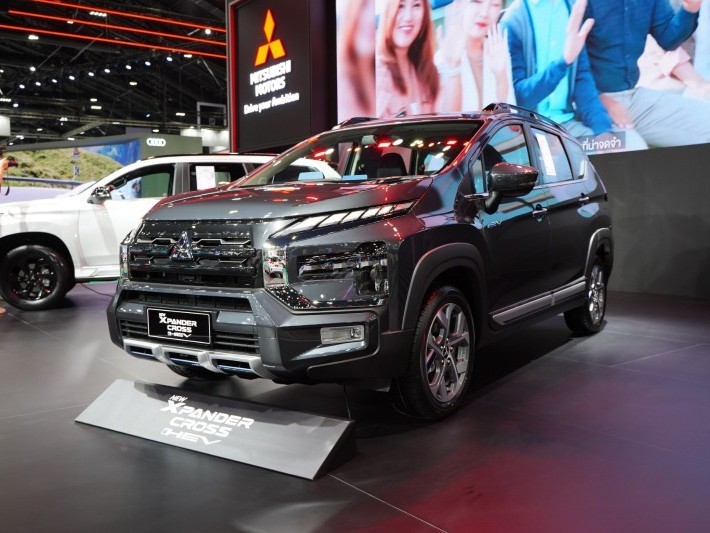
Bangkok Motor Show: MITSUBISHI XPANDER CROSS priced at 946,000 Thai Baht
Kevin WongMar 26, 2024

Mitsubishi brings Xpander and Xpander Cross HEV models to 2024 Bangkok International Motor Show
AshleyMar 18, 2024
View More









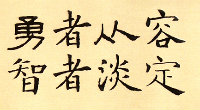
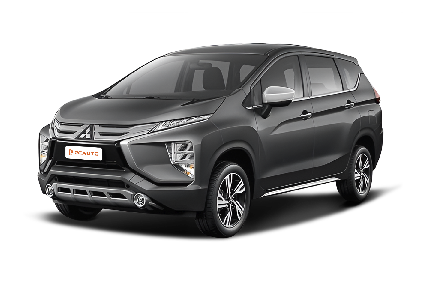

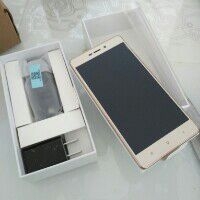



Pros
Cons